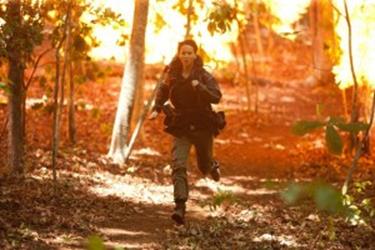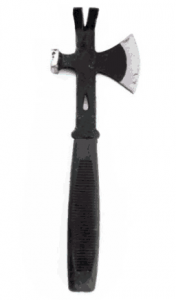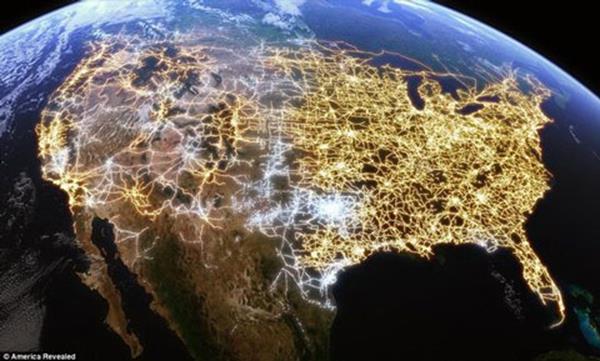This is a guest post by Dare T.
First of all, not every survival scenario is going to fit everyone’s needs. There is no “one size fits all” strategy. Much depends on your age, if you are raising a family, your occupation, where you work and your income. Being single means I don’t have immediate help as I grow older; no second income, no helpmate, no children. All of my siblings and close relatives live 1800+ miles away. Although I have long since settled my heart on the fact that the Lord called me to be single, it seems to me that you married preppers have it a little easier.
Being a single middle-aged gal, my needs are different from other preppers. I have been avidly preparing since 2007, but I have always been fascinated by stories my family elders told about how they lived and made do during the Great Depression. Both my Father’s and Mother’s parents were hard-working frugal folks who recycled and re-purposed everything, grew survival gardens and kept a cow (for daily milk), chickens (for eggs and the occasional meat) and would raise at least one pig a year for the ham.
I have incorporated much of the frugality of my elders, and adapted it to my urban surroundings for most of my life. I was never a fashion-plate and did most of my shopping at resale stores. I’m not into jewelry, or fancy purses or perfumes. I like plain soap, bluejeans and sensible shoes. Having been a Girl Scout in the 1960′s, I became familiar with many survival skills, such as identifying animal tracks, fishing, camping and knitting. However, I was not that into sewing and homemaking classes in high school, so I had to acquire those skills along the way.
Since beginning my preps in earnest, I have acquired a Berkey water filter with back-up filter candles, have stockpiled a month’s worth of water, bought a shotgun with 100 rounds of ammo (thus far) and learned to shoot it, purchased several other boxes of ammo in .22, 9mm, and .38 calibers for barter, various other tools and resources including 3 months of food storage, camping equipment, edged weapons, crossbow and arrows, slingshot with ammo, several books on survival topics, sprouting seeds and sprouters, heirloom garden seeds, knitting looms and yarn, sewing notions stockpile, first aid kit stockpile, set up a “store” for non-food items I use frequently and began stockpiling these items such as toothpaste, toothbrushes, deodorant, aluminum foil, toilet paper, paper towels, matches, paper plates, plastic cups and utensils, dog food and pet first aid. I have a bug out bag ready to go if I ever need to leave home and already know my destination. Most of the basics are now covered, which allows me to concentrate on acquiring barter goods and stockpiling more ammunition for my firearms and food and water.
During my working life I have lived in rented apartments in big cities or close-in suburbs of big cities. Long about 2007 I could see the handwriting on the wall and decided I needed to re-position myself in order to have a better retirement and survive an economic collapse. As the economy worsened, and our politicians increased our woes, I decided I had to make some changes and fast, if I was going to survive what’s coming.
The first step was to devise my strategy. I took a look at every aspect of my current life, and what may lie ahead in my retirement.
Regarding my employment and work: I reasoned I needed to stop working for others and create a job I could take with me wherever I live. If I could work from my home, that would be ideal.
Housing:
Since I am near 60 years old, I knew I had to find a safe place to shelter in place. Sheltering in place is the best strategy for me as I am not able to live off the land – at least not for very long.
I also needed to own a home with a yard where I could garden. Apartment managers in the complexes where I rented were not too keen on gardening and had way too many rules about what tenants could and could not do. If you need to rent, and have property management that allows and encourages gardening, you are very fortunate!
Health:
As I grow older I know my health will decline, despite my best efforts taking care of myself. So it became imperative to find a location that had access to good doctors, and a good hospital or clinic.
Location:
Having been raised in a small town in Indiana, I wanted to return to a small town, if one could be found that met my needs. I wanted to live away from the “line of drift” of the inevitable refugees after the collapse, in a low population area, but in a town that had all the amenities I needed for quality of life issues. I wanted to live in a town with a really great library, a Senior Center, and local cultural events. Additionally, it must be near a body of water, have a gun club, be in a politically conservative area/county and have several wonderful churches. I was going to relocate for the last time and I wanted to get it right.
Once I had my needs spelled out, my first priority was to transition into working from home.
As it happens, I work in telephone sales and business development. I decided to find an employer who allowed me to work from home, setting appointments for their sales staff. I was able to find such an employer. However, as the economy worsened in 2008 and 2009, I noticed it was getting harder to meet the quotas my employer needed, so I decided to branch out and start my own business development business and continue to work from home.
This way, I could hire myself clients on a part-time or project basis, and work my own schedule. There are many business professionals who just hate setting appointments for sales, and are willing to pay someone to do this work. Many are quite realistic in their expectations regarding production, so this became ideal. In fact, it turned out to be wonderful, with the exception of steady pay from clients. I had to learn to run a business, pay my own taxes, fire some clients and hire new ones. and find my own inner resources to keep doing the work without direct accountability. Overall, transitioning to work from home was not as hard as I thought, so I was able to have a job I could take with me.
Next I needed to find the location to move to. Knowing that I wanted a smaller community, with amenities for Senior healthcare and like-minded people (with the additional needs for water sources, climate, length of growing season, etc.), and already living in the Pacific NW, I concentrated on looking at smaller cites and towns in the American Redoubt.
Using an Atlas and Google maps, plus several Internet tools such as:
Free Map Tools/Radius Around A Point on a Map (http://www.freemaptools.com/radius-around-point.htm). I used this tool to determine areas to look deeper for locations to move to, after plotting distances from targets. Example, if you want to be at least 160 miles away from a target city, select the target and enter 160 miles. Do this for every target you can identify in the region where you are looking. Anything that falls outside all the plotted targets is where you look for potential locations. Anywhere within or in overlapping plotted targets are to be avoided.
How Far is It? (http://www.infoplease.com/atlas/calculate-distance.html)
How Far Is It? Is a distance calculator to determine how far a distance is between 2 points “as the crow flies” or in a straight line. This is a good one to use if you are concerned about being downwind of radioactive fallout.
I eliminated any location too close to larger cities (population centers of 250,000+ population); too close to strategic targets of terrorism or war; areas prone to natural disasters of a certain frequency and level of mitigation; and far enough away from other targeted cities/areas to be able to survive. The result of this work helped me to narrow down my list to 3 towns in the Redoubt that met all my criteria.
Next, I took a look at what I could afford insofar as housing and what I could manage to do physically as I grew older. I knew I didn’t have enough money to buy rural land and a house, nor would I be able to handle the work involved in developing and maintaining a rural property. Having rented apartments my whole life, I decided to buy a manufactured home in a low-cost MH community and pay space rent.
I figured the cost of rent must be less than the mortgage and taxes I would pay if I bought a real property home, even as the rent for the mobile home space increases as time goes by. I also decided to concentrate on finding a home in an all-age park. I reasoned that the park setting itself would naturally lend itself to be it’s own community and the elderly living there would be able to make friends among the younger families. There would probably always be a teenager who would mow the lawn for me for a few bucks, and a few handymen who could do the odd jobs I would not be able to do around the house.
To narrow my search I used the Internet to locate family mobile home communities in my selected cities. My primary source of information was Mobile Home Village (http://www.mhvillage.com/). This is an aggregate website that lists all of the MH communities all over the country. The search tool allows you to select for all-age/family parks or age-restricted parks, and those that allow pets, etc. Many listings give current space rents as well. This tool was invaluable.
I made a list of all suitable parks in each three locations, then looked deeper at several other important factors, such as how close water sources were to each location. Was there a source for water I could get to if need be, once my home stores of water run out? If so, how far would I have to walk, bicycle or drive to get to it? Is the area of the MH community prone to flooding?
This turned out to be the most problematic of the all my preparations because the “devil really is in the details.” Not every community turned out to be the best for all my needs. In fact, most were compromised in one or two major categories. And that’s a big lesson for each of us: there is no perfect place. Faced with this development I decided to try to find a town and a MH park that met my primary needs, while meeting most of my secondary needs. At that point a final search tool became very important. I used Google map set on Satellite View to look at wind direction.
Here’s what I did: Airports are set up with runways aimed in the prevailing wind direction, so aircraft during take offs can have a tail wind, and a head wind to help during landings. So I looked up the addresses of each target location’s airport to see which direction the wind generally comes from, keeping in mind that wind direction varies throughout the year. The best you can do with this research is see which direction the wind comes from most of the time. These littlest details can make all the difference. Once I saw which way the wind blew, I got a clearer picture of where I needed to be. If that target location was a nuke target, then I knew I needed to be either upwind of that target or far enough away to mitigate the fallout.
I finally found the town and the MH community within that town, that met all of my primary needs and most of my secondary ones. I ended up buying a very nice one-owner used manufactured home in a small 55+ park in the town, population just over 9,000.
The town is 165 miles away from a large city as the crow flies, with a mountain range in between. It is in an area of High Desert, with 280+ days of sunshine annually, and only 12 inches of rain per year. The town is in a conservative area (more registered Republicans and Independents than Democrats). While there is only 12 inches of rain annually in the region, the park I moved into is 2 ½ blocks away from a river. The river serves the region, and is a tributary of an even greater river.
Although the residents use city water indoors, the park itself has water rights to the river and allow residents to use river water for lawn and garden maintenance. The river water is actually pumped to each home with an outdoor spigot. Upsteam of the river are 2 large reservoirs, which are both easily accessible. There has never been a flood of this town because the creeks and irrigation channel systems were created which utilized and devised a way to minimize such a danger. It also helps that the river is a favorite of locale anglers, abounding with plenty of white fish and rainbow trout.
The town does not have a gun club (sigh), but area ranchers have no problem with using their own ranges. There is a gun club in a neighboring town just 8 miles from my house, and membership is quite inexpensive. While the town itself is a little over 9,000 in population, it is 33 miles away from a city of 80,000 and 17 miles away from a city of 25,000. At a higher elevation from each, the only real threat from population drift on foot would come from the smaller city nearby. In this tri-city location, my town has the reputation of being the most conservative of the three. I can attest to this, having made new friends who are like-minded and friendly. Churches are everywhere in this city, and it is a truly great place to raise a family.
Is it perfect? No. My yard is small, but I have a large deck and driveway, where I can do container gardening. I was lucky that the previous owner put in several fruit trees that produce, so I will have to add canning and possibly wine production as new skills to acquire. My living room windows face south, so I am thinking of putting in a solarium or garden windows on that side of the house, for year-round food production. Deer come into the park on a regular basis, which means they are plentiful in the surrounding foothills. During deer season you can hear shooting from the hunter’s guns echo around the area from a distance.
The town takes pride in its annual rodeos and there are several small ad shopper type newspapers which advertise butchers (for your deer kill) as well as gun/ammo stores, fly fishing outfitters and ranch stores. Trucks outnumber cars here. Crime is low and mostly non-violent. There are many ads for handymen looking for odd jobs.
The MH park has monthly meetings for residents in the Community Center. Although it is a 55+ park and age-restricted, younger folks are allowed to live there as long as they are caretakers for a resident. Dogs are allowed and my chihuahua has made many new dog friends. The county recently built a new library just 2 blocks away, with a small park and nature walk along the river. Information plaques dot the path at intervals, calling attention to the local flora and fauna, including tracks of the critters that live near and along the river.
Financially, my expenses have been cut in half with my total living expenses topping out under $1000 a month. My income has only taken a small drop, but that has given me the opportunity to be more selective in my choice of clients and projects, and freeing up more of my time to pursue learning new skills and beef up my preps.
There is a local hospital and several hearing, vision and veterinary clinics in town. A larger hospital is nearby in the town of 25,000, and a regional Medical Center in the city of 80,000. I don’t miss the endless malls, or the crime and pollution at all. I have more sunshine and friendlier people and much less stress in my life now, after making the move 6 months ago.
As time goes on, I am making a point of learning about the local medicinal and edible plants, learning which varieties of garden vegetables grow best in the area, and making more new friends to form my “core trusted group” of people if TEOTWAWKI happens. I may volunteer to help with the County Sheriff’s office, the library and take a Red Cross training or two.
For those of you who are single and need to move away from the cities, my advice is to find a way to take a job with you first. If you are interested in learning more about what I do for a living, I can advise you on ways to cheaply set up your home office, and how to find clients. Just contact me at my email address: [email protected]
Start now to make sure you are staying prepared.
Via: thesurvivalistblog








 Follow
Follow




